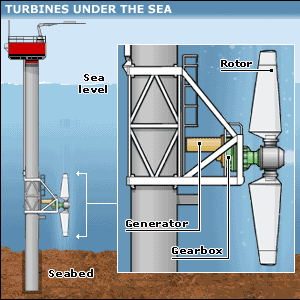Solving Energy Needs
by Dan Genditzki
We need to find some answers for our most puzzling
energy needs. We are dependent upon an oil supply that will not be around much longer. We have drilled for oil all over the
world searching for vast deposits of those precious fossil fuels. Technology has helped us drill on land and in the sea at
record levels, but we have a short time to find viable alternatives. Education is essential to solving our energy needs. There
is a newfound understanding that our resources are dwindling at an alarming rate. Many emerging markets need fossil
fuels for everything from factories to their employees driving their cars to and from work.
The world’s largest country, China,
for example, is a colossal giant awakening to the technological world around them. They are having an increased thirst for
oil that grows daily. Several countries have just recently opened their borders to foreign influence. Other countries have
entered the European Union, which stimulates international trade and greatly boosts fuel consumption. With demand at an all
time high, we, as Americans, will have to battle other countries financially and politically to get our hands on a shrinking
supply. If our younger generation does not work out alternate plans for fuel consumption, we will be in big trouble.
Thankfully some youngsters have stepped up to the plate. Many colleges and universities have educational programs aimed
at solving energy needs, and jobs for these students are growing in availability. The research field offers opportunities
in everything from automobile jobs to the oil industry (Shell, BP, Exxon . . .) Fuel reduction is important work that
is mutually understood between the public and corporations. Education is the means to bring about change.
One important step is to keep making strides away
from oil dependency so we don’t get caught in an energy crunch. With the rising prices of fuels, there is a new urgency
because our earth’s fossil fuels are running out. Nature’s renewable resources (wind, water and the sun) are beginning
to play a part in our energy needs and this greatly reduces our dependency on oil. Another great step toward energy conservation
is to alter what we already have to save more. We are finally seeing a change in the automotive world with the engines. They
are currently our biggest polluter, releasing millions of tons of CO2 into the atmosphere and have been one of
our most wasteful fuel consumers. Now there are cars that are gas efficient, electric hybrids, and cars that run on corn-and-soy
based biofuels. Cars are becoming both energy efficient and are polluting less. This
is a necessary first step in a long process of experimentation and creativity.
Great strides have also been made in reducing energy
needs for homes and businesses as well. Solar panels, which have photovoltaic cells, are more efficient than ever in capturing
and storing the suns rays. With more people purchasing grid system solar panels, the purchase price is finally dropping, making
them an affordable alternative. You can purchase a full set up for just about ten thousand dollars, and if you produce more
energy than you need your local energy company is required by law to purchase your leftover kilowatt hours for the same price
they would charge you. By using solar panels and selling energy homes and businesses can reduce their energy needs significantly.
This conserves fuel and reduces CO2 emissions.
Wind
power has also come a long way this past decade. Mills were initially used centuries ago for crushing grains or pumping water
physically turning machinery to do the work. Now they produce massive amounts of power by converting the rotation on turbine
blades into energy using an electric generator. The majority of our country’s mills are located in California, where they can capture thermal updrafts coming off the ocean with huge blades.
Others are mounted in the ocean on land bridges or cement pillars. Homes and businesses can opt to purchase the wind power
from their local power company. Researching optimal locations for wind generated power is just part of the task.
Another alternate fuel option is ocean energy. The
ocean’s power has unimaginable potential, but it is a resource we have barely tapped. One way ocean power has been harnessed
is by using tidal energy turbines. England
launched their first one in 1999 and it resembles massive underwater fan blades (BBC News. 2003). The other
main way ocean energy is used is by Ocean Thermal Energy Conversion or OTEC. Power
plants can be built that use differences in temperature to make energy. A difference of at least 38 degrees Fahrenheit is
needed between the warmer surface water and the colder deep ocean water (Energy Store, 2006). Also there are experimental buoy
systems that rise and fall with the wave’s movement. These are connected to wire systems that pull in and out to turn
turbines. This is the least popular so far due to the damage they can sustain in the punishing environments yet, the science
is vast and exciting knowing water has such amazing power potential. We have been damming rivers for centuries and this has
worked very well. These methods should be explored fully in order to continue decreasing Americans dependency on oil. There is always room for improvement on energy intake and storage and governments
all over the world offer research grants in an effort to utilize what resources they have at their disposal.
On
August 1, 2006, we witnessed unprecedented local change in fossil fuel dependence. Vail Resorts has teamed up with Renewable
Choice Energy to get one hundred percent of their electricity from wind mills. They purchased nearly 152,000 megawatt hours
of wind energy for its five mountain resorts and in all 125 of its retail locations. This will avoid over 211 million pounds
of carbon dioxide emissions every year, which is equivalent to taking 18,000 cars off the road or planting over 27,000 acres
of trees, according to the Environmental Protection Agency. (Pr News Today, 2006).
This is great news! Vail is now the second largest corporation in the country to do so following Whole Foods. "By embracing
wind power as a clean and renewable source for 100 percent of our company-wide electricity use, we want to reinforce our commitment
to the natural environment in which we operate and be a leader on this critical effort within the travel industry", said Rob
Katz, chief executive officer of Vail Resorts (Kim Nguyen, 2006).
Another great local story comes from Colorado Mountain College
founding board member and entrepreneur, Jim Callaway. Once a Texas oil man, he has moved
to Carbondale where he has now found new respect for the environment.
He sold his oil company, Edge Petroleum, and has come to embrace wind power by starting a new company called Superior Renewable
Energy. He has sold windmills all over the country and he feels it’s the future. "It is so exciting to me," Calaway
said, "to be in the extraction industry all of my professional life, about 50 years really ... then to switch into another
energy business that is renewable" (Frey, 2006). He was the first in his family to go to school and is now a prominent
donor to our school, realizing education is the key to our future. If a new start is to come, it will be from our generation,
possibly from this class.
It will soon be our turn to stand on the shoulders
of those who came before us. The future could lie here at the same CMC school that Mr. Callaway donated to. With an education,
we have a foundation giving us more chances to help solve this dilemma of the times. There are many things we as students
can do right now to help. We can carpool to work or school, keep unused lights turned off, plant trees, recycle, buy efficient
cars, purchase products with the energy star label, purchase products with little packaging, and purchase products that are
recycled. If all of us concentrate on the little things this will add up and help. Energy conservation starts at home. I feel
the winds of change coming. The more we know about helping our mother earth, the better off we will be to help her recover.
The pollution so far is reversible. With education, creativity, motivation, and proper research funding, we will discover
new solutions to deal with our energy problems.
Works Cited
Frey, David. “Oilman feels change in the wind.” Aspen Daily.
2006.
<http://enews.coloradomtn.edu/index.cfm?method=c.ProfileDetail&ID=124>
Nguyen, Kim. “Vail Resorts to switch to wind power.” Boston.com.
1 Aug. 2006
<http://www.boston.com/news/nation/articles/2006/08/02/vail_resorts_to_switch_to_wind_power/
>
“Ocean Thermal Energy Conversion (OTEC)” Energy Store. 2006.
<http://www.energyquest.ca.gov/story/chapter14.html>
“Tidal energy turbine launches.” BBC News
England. 16 June. 2003
<http://news.bbc.co.uk/1/hi/england/devon/2992996.stm>
“Vail Resorts Chooses Wind Power for 100% of Electricity Use-Becomes Second
Largest Corporate Wind Power Purchaser In U.S.”
PR News Today. 1 Aug. 2006
<http://prnewstoday.com/release.htm?cat=travel&dat=20060801&rl=LATU07501082006-1>

